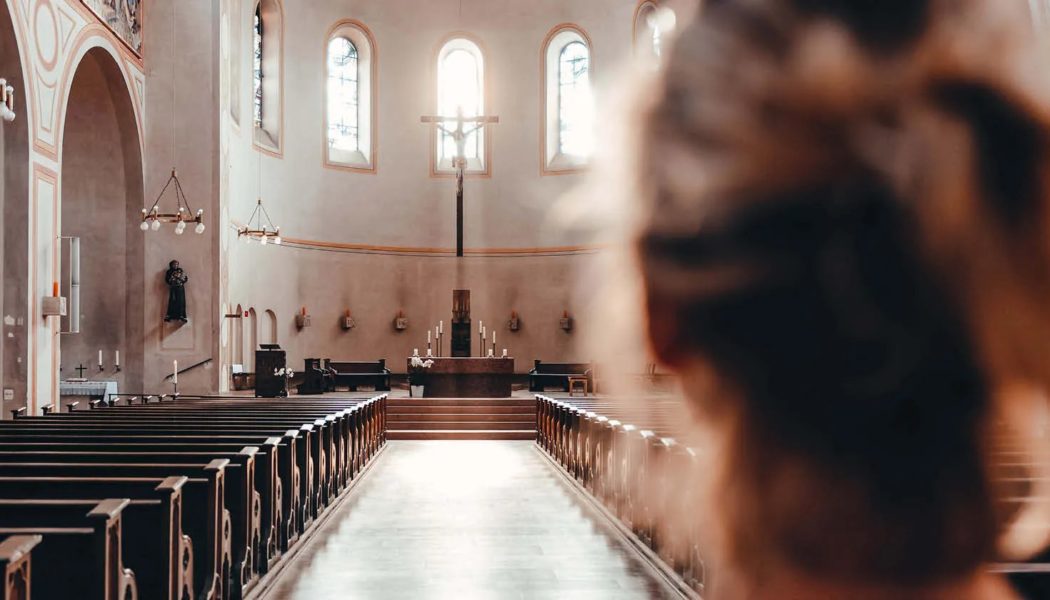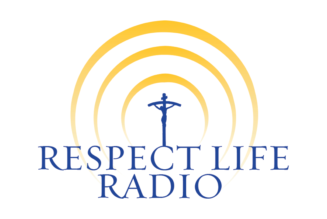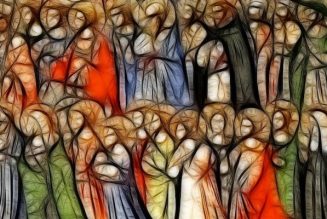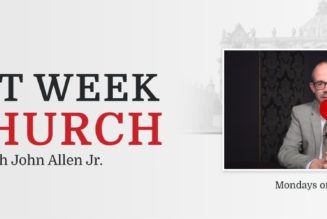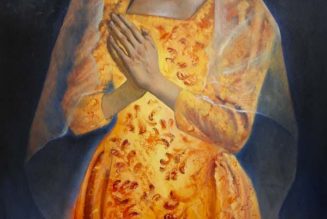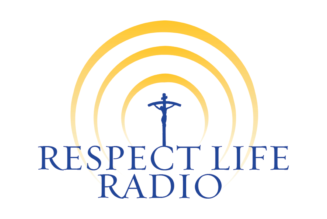
Jesus comes over for dinner at the house of friends in the Gospel for the Sixteenth Sunday in Ordinary Time Year C, and one host, Mary, we are told, “sat beside the Lord at his feet listening to him speak,” while her sister Martha “burdened with much serving, came to him and said, ‘Lord, do you not care that my sister has left me by myself to do the serving? Tell her to help me.”
Jesus’ reply to Martha has been used as a lesson ever since, but we often forget how thoroughly it changed one person’s life and legacy: Martha herself.
This story is often used to illustrate two vocations. But it tells us so much more.
“Martha, Martha, you are anxious and worried about many things,” Jesus answered the complainer. “There is need of only one thing. Mary has chosen the better part, and it will not be taken from her.”
Jesus’s comparison of the two has been applied ever since to the religious life vs. the lay life and the contemplative life vs. the active life. “Virtue does not have a single form,” as St. Ambrose put it. “In the example of Martha and Mary, there is added the busy devotion of the one and the pious attention of the other to the Word of God, which, if it agrees with faith, is preferred.”
And that is absolutely true: The contemplative life is a higher calling than active callings. Both are sublime; one is greater. The key is the last seven words of the Gospel, about Mary’s work, says St. Augustine: “it will not be taken from her.”
“With deep concern, [Martha] prepared what the Holy of Holies and his saints would eat and drink in her house,” he said. “It was an important but transitory work. It will not always be necessary to eat and drink, will it?” He’s right: Mary’s vocation continues in heaven; Martha will join Mary’s calling there.
But without denying that this distinction is real and important, it is possible to see something more. I like how Bishop Robert Barron puts it in his Word on Fire Bible:
“What Mary has chosen is not so much the contemplative life, but the focused life. She is anchored, rooted in [Christ]. The implication seems to be that were Mary to help with the many household tasks, she would not be ‘worried and distracted’ by them, since she could relate them to the center and that, were Martha to sit at the feet of Jesus, she would still squirm with impatience, since her spirit is divided.”
You see this “focus” in the Abraham’s story — and in how Martha acts later on.
The First Reading this Sunday is another story about a busy dinner host, but one who handles his task differently.
Abraham meets three angels, together called “the Lord” in the text, and serves them. He bathes their feet, delegates various tasks and waits on them himself throughout their meal. Like Martha, Abraham never stops serving, but unlike her, he never stops giving “the Lord” his full attention. He doesn’t see himself as a martyr for having to serve the Lord while others relax; he is privileged to serve, and leads others by example.
Martha should have done that. She should have waited on the Lord and encouraged Mary’s help instead of judging and complaining. In fact, that’s exactly what she does, later on.
On July 29, the Church will celebrate St. Martha’s feast day, and we will meet Martha, transformed, in the later story of her brother’s Lazarus’s death. One line in that Gospel story tells turns the whole Martha and Mary dichotomy on its head: “When Martha heard that Jesus was coming, she went to meet him; but Mary sat at home.”
Here is that same active Martha, only now her activity is focused on Jesus and is a virtue. And here is Mary, still sitting — but when Jesus is elsewhere, sitting is no longer admirable.
There’s more — and it proves that centering your life on Christ doesn’t change your personality; it elevates it.
Mary’s tendency to sit, when it’s directed to Christ, is saintly. When it’s not, it isn’t. Martha’s activity, when it isn’t focused on Christ, is a problem. When it is, it’s impressive. Neither Martha nor Mary’s personalities change at all in this story; but supernaturally they are both utterly transformed.
In fact Jesus has to send the active Martha back to get Mary off her seat to come listen to him again, which she does, which occasions another remarkable line:
“Now Jesus had not yet come to the village, but was still in the place where Martha had met him.”
Think of that. Mary didn’t just run to Jesus, she ran right out of her village into the open road to get to him as quickly as possible, even before he got to the town border. Martha is the Prodigal Son in reverse. In that parable, the prodigal returned and “while he was yet at a distance, his father saw him … and ran and embraced him and kissed him.” Here, the Prodigal Martha, after refocusing her life on Christ, runs out to meet the returning Lord when he is “at a distance.”
Even Martha’s tendency to complain is redeemed when it is focused on Jesus.
“Lord, if you had been here, my brother would not have died,” Martha complains to Jesus. And she doesn’t accept his four word response — “Your brother will rise.” Martha-like, she insists Jesus do more. Her persistence leads to one of the great events of the New Testament, the raising of Lazarus, and also elicits some of the most consoling words of Jesus, ever:
“I am the resurrection and the life. Whoever believes in me, even if he dies, will live, and anyone who lives and believes in me will never die.”
The old Martha served the Lord with a divided heart. The new Martha goes straight to him when she knows he is near. The old Martha was anxious and worried about many things. The new St. Martha is inquisitive and insistent about one thing: The Lord’s promise of salvation.
And this new Martha, focused on “the one thing necessary,” doesn’t just listen to Jesus, she gives one of the greatest professions of faith in the Gospel:
“Yes, Lord. I have come to believe that you are the Christ, the Son of God, the one who is coming into the world.”
So be like the new Martha — and like Abraham. Start at Sunday Mass.
As St. Ambrose describes it, when Abraham saw the three angels in the first reading as “the Lord” he “saw the Trinity typified. He added religious devotion to hospitality, for although he beheld three, he adored one, and while keeping a distinction of the persons, yet he called one Lord, thus giving honor to the three but signifying one power.”
So, if Abraham was serving the Trinity, that would include the Second Person of the Trinity, who is Jesus Christ — the same guest Martha dined with in her home, and the same Guest who presides over the Mass.
If we are the old Martha at Mass, we will be anxious and worried about many things. Our mind will go over what is bothering us in our life, including what is bothering us about the people around us.
If we are the new Martha at Mass, we may have exactly the same concerns, but we will bring them to the Lord. We may have lots of distractions; we will focus on Jesus who lies beyond them.
“The Lord appeared to Abraham by the terebinth of Mamre as he sat in the entrance of his tent,” says the reading, from Genesis. He appears to us each Sunday in the same way.
Or, better, he goes further for us, because instead of us sacrificing a steer to feed him, Jesus sacrifices himself to feed us. And after receiving him in the Eucharist, we can say, with St. Paul in the Second Reading: “In my flesh I am filling up what is lacking in the afflictions of Christ on behalf of his body, which is the church, of which I am a minister.”
And suddenly we aren’t Martha or Mary or Abraham — we are the Body of Christ.
Join Our Telegram Group : Salvation & Prosperity
